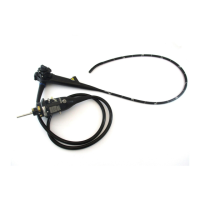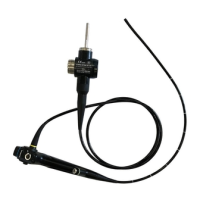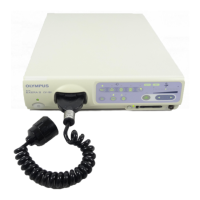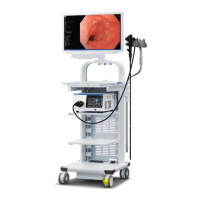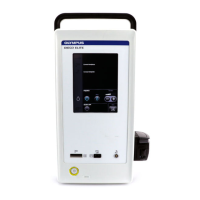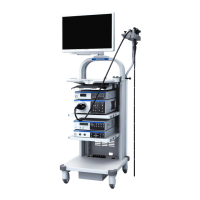4.1 Warnings and cautions: operation
51
BF-190 Series OPERATION MANUAL
Ch.4
Chapter 4 Operation
This manual does not explain or discuss clinical endoscopic procedures. It only describes basic
operation and important information related to the operation of this endoscope. Therefore, the operator
of this endoscope must be a physician or medical personnel under the supervision of a physician and
must have received sufficient training in clinical endoscopic technique.
• To guard against dangerous chemicals and potentially infectious materials during
the procedure, wear personal protective equipment, such as eyewear, face mask,
moisture-resistant clothing, and chemical-resistant gloves that fit properly and are
long enough so that your skin is not exposed.
• The temperature of the distal end of the endoscope may exceed 41C (106F) and
reach 50C (122F) due to intense endoscopic illumination. Surface temperatures
over 41C (106F) may cause mucosal burns. Always maintain a suitable distance
necessary for adequate viewing while using the minimum level of illumination for
the minimum amount of time. Do not use close stationary viewing or leave the distal
end of the endoscope close to the mucous membrane for a long time without
necessity.
• Whenever possible, do not leave the endoscope illuminated before and/or after an
examination. Continued illumination will cause the distal end of the endoscope to
become hot and could cause operator and/or patient burns.
• If significant resistance is felt during insertion, do not insert, withdraw or turn the
insertion tube of the endoscope with excessive force. Patient injury, bleeding,
and/or perforation may occur.
• Never insert or withdraw the endoscope under any of the following conditions.
Patient injury, bleeding, and/or perforation can result.
While the EndoTherapy accessory extends from the distal end of the
endoscope.
While the bending section is locked in position.
Insertion or withdrawal with excessive force.
• Transnasal insertion is accompanied by the risk of inflammation of the nasal cavity.
If this happens, the nasal passage will be constricted, making it more difficult to
withdraw the endoscope. In this case, do not use force to withdraw the endoscope
because patient injury, bleeding, and/or perforation may result.
4.1 Warnings and cautions: operation
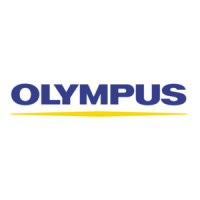
